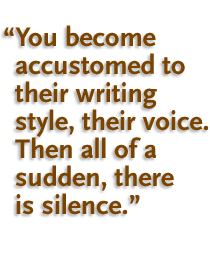 uring a trip to rural Missouri in 1990, Sister Mary Elizabeth met a number of people living with AIDS who were unable to obtain the latest news and information about the disease for fear of losing their privacy. "I realized that electronic bulletin boards were the answer,'' the 57-year-old Episcopalian nun says. "Users would have up-to-date information and could retain their anonymity.''
uring a trip to rural Missouri in 1990, Sister Mary Elizabeth met a number of people living with AIDS who were unable to obtain the latest news and information about the disease for fear of losing their privacy. "I realized that electronic bulletin boards were the answer,'' the 57-year-old Episcopalian nun says. "Users would have up-to-date information and could retain their anonymity.'' That same year, Sister Mary Elizabeth followed her inspiration and founded the AIDS Education General Information System (AEGIS), now the world's largest database for AIDS and HIV information. AEGIS, which Sister Mary Elizabeth runs from her mobile home in the old California mission town of San Juan Capistrano, is the hub for some 144,000 electronic files that include all the AIDS-related contents of the National Library of Medicine and the Centers for Disease Control and Prevention.
AEGIS also provides scores of bulletin board areas where those with AIDS, as well as doctors and researchers, can share information about the disease, which is now the third leading cause of death among adults aged 25 to 44. AEGIS is free to users; the $20,000 annual cost of maintaining the service is acquired through contributions and Sister Mary Elizabeth's part-time work as a computer consultant.
From around the world, as users communicate over the AEGIS bulletin board, Sister Mary Elizabeth has come to recognize individuals among the thousands. "You become accustomed to their writing style, their voice," she says gently. "Then all of a sudden, there is silence. Another bright star in the heavens has gone away."





